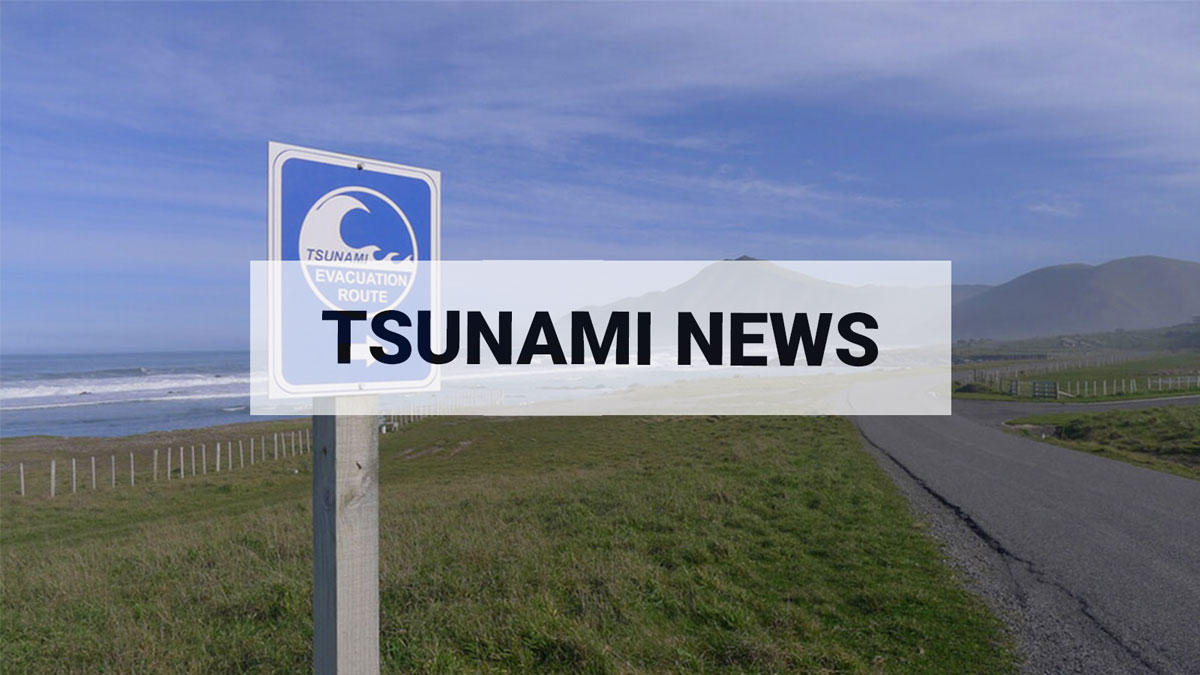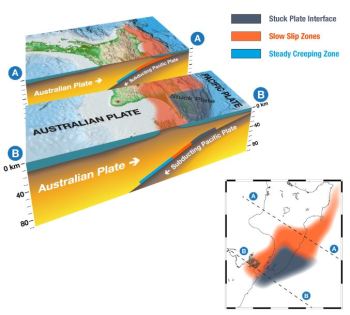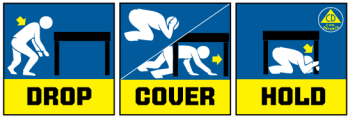
We dive deep into the Hikurangi Subduction Zone
In the North Island of Aotearoa New Zealand, we have our largest plate-boundary fault, the Hikurangi subduction zone. It’s the largest source of earthquake and tsunami hazard in New Zealand. Over the next few weeks, we will take a closer look at this fault and what it means for us.
New Zealand is at the boundary between two tectonic plates, the Australian Plate, and the Pacific Plate. In the North Island, the Pacific Plate is being pushed under the Australian Plate in a process called subduction. Watch how this works in our video below:
Where is the Hikurangi Subduction Zone?
The Hikurangi Subduction Zone occurs along the east coast of the North Island and under the tip of the South Island, where the Pacific plate dives beneath the Australian plate. Most of the northern part of the Hikurangi subduction zone appears to be either creeping steadily or moving in slow slip events – more on slow slips below. In contrast, the southern part of the fault boundary beneath the lower North Island appears to be locked due to friction on the fault. This locking causes a build-up of stress and when the stress is big enough, the faults move suddenly and cause earthquakes.
Subduction zone earthquakes vary in magnitude, the largest subduction zone events we have had in New Zealand are the 1947 Tairāwhiti Gisborne earthquakes and tsunamis, which we looked at in a previous story, but geological records indicate that earthquakes in the past have been much larger.
What are Slow Slip Earthquakes?
Slow slip events are common along the Hikurangi Subduction Zone. This is when the energy is discharged slowly, over weeks to months, not through a sharp jolt (what we typically relate to as earthquakes). They occur when the boundary between two tectonic plates becomes temporarily ‘unstuck’ and they begin creeping past each other for a period, sometimes weeks or even months. Humans can’t feel these earthquakes and they are even too slow to be picked up by seismometers. We only know about them with the help of special GPS equipment that measures the slow movement of the land.
What about the big quakes?
Subduction zones, like the Hikurangi Subduction Zone, are responsible for generating the world’s largest earthquakes. The length of the Hikurangi Subduction Zone means it is capable of a magnitude 9 earthquake, like the earthquake that occurred in Japan in 2011, which would cause severe to extreme shaking across the North Island and the top of the South Island and generate large tsunami.
Research indicates there is a 25% probability of a major earthquake on the southern section of the Hikurangi Subduction Zone, beneath Wellington/Wairarapa/Marlborough, occurring in the next 50 years. The central and northern parts of the zone behave differently. The best evidence now, suggests these major earthquakes are relatively rare, happening every several hundred years or more.
Although it’s good to plan for the rare but large magnitude 9 earthquake, the Hikurangi Subduction Zone does also rupture causing smaller but still significant earthquakes, and it's important to be prepared for these as well.
Read the rest in our Hikurangi series here:
Earthquakes can occur anywhere in New Zealand at any time. In the event of a large earthquake: Drop, Cover and Hold.
Remember Long or Strong, Get Gone : If you are near the coast, or a lake, and feel a strong earthquake that makes it hard to stand up OR a weak rolling earthquake that lasts a minute or more move immediately to the nearest high ground or as far inland as you can, out of tsunami evacuation zones.
Know what to do?
The National Emergency Management Agency (NEMA) has a great website with information on what to do before, during and after an earthquake.
Prepare your home. Protect your whānau.
There’s a lot we can do to make our homes safer and stronger for natural hazards. Toka Tū Ake EQC’s website has key steps to get you started.
Media Contact: 021 574 541 or media@gns.cri.nz




